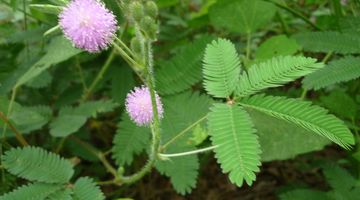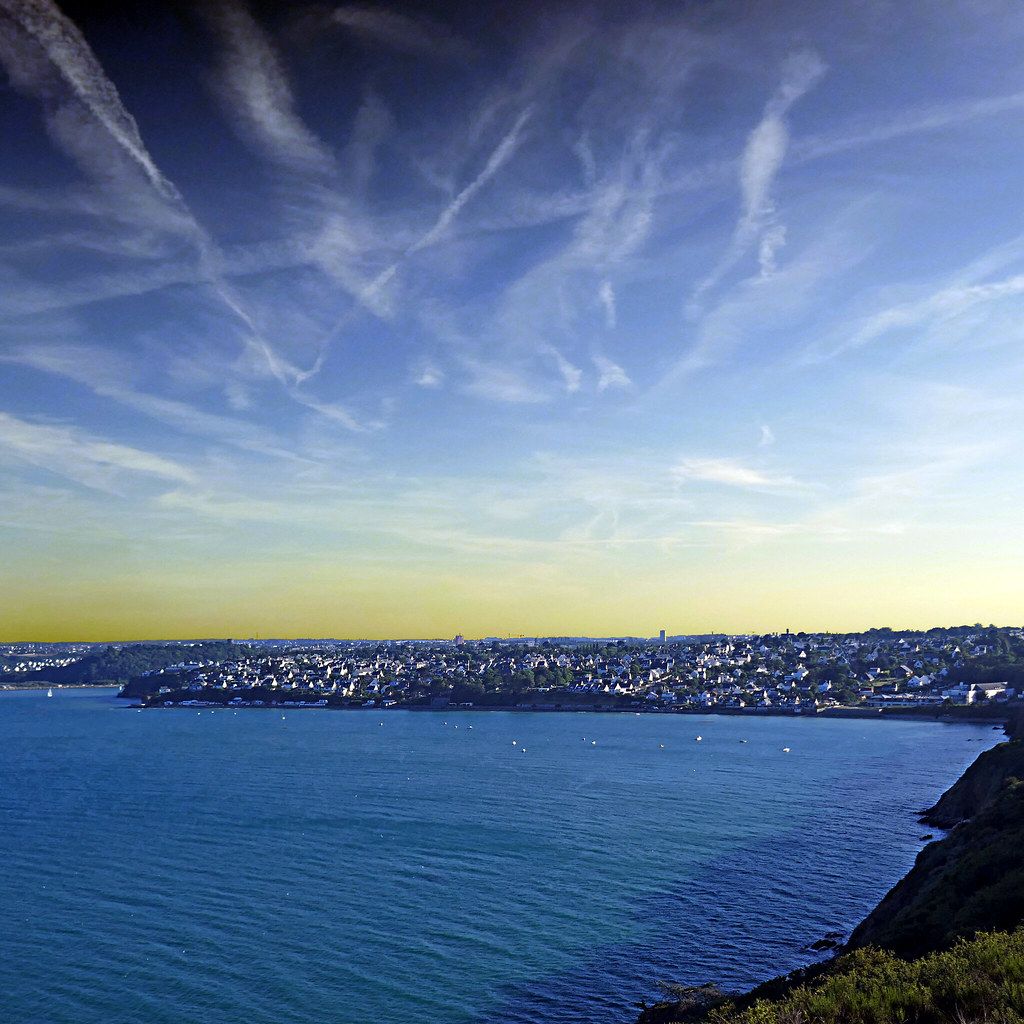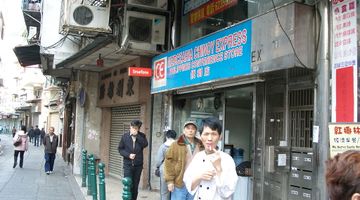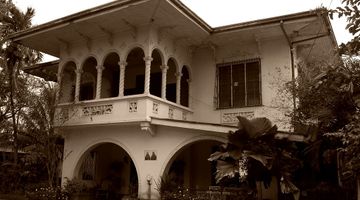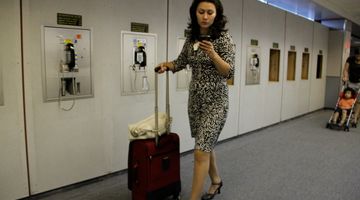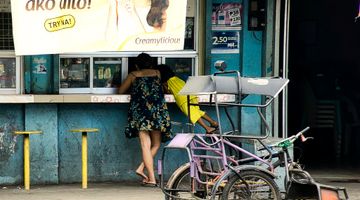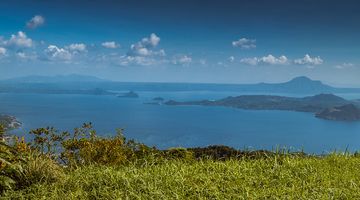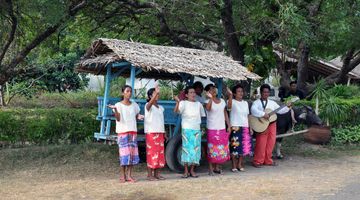Bais Travel Guide
In a nutshell
Considered the main producer of raw sugar in Negros Oriental, Bais City is slowly gaining traction as a prime spot for dolphin watching among the local and international tourists.
Why go to Bais
As for now, Bais remains largely an uncharted territory, and we urge you to explore this place before everyone else catches on. Doing the rounds of travel forums online, you can find that this hidden gem has plenty to offer in terms of nature and adventure.
First of all, it boasts one of the most panoramic sandbars in the archipelago. While best seen during low tide, it can still be enjoyed when the water comes in. The gorgeous blue water is perfect for swimming and a bit of snorkelling.
Once you've had your fill of beach bumming, you can embark on a dolphin sighting adventure. If you're lucky, you can even see a whale frolicking with dolphins off Tanon Strait. During peak season, this area is teeming with various species of dolphins: bottlenose, spinner, spotted, Fraser's, and striped. It's your best chance to see these adorable creatures off the big screen.
Going back to shore, a protected mangrove forest provides peace and relaxation amidst a canopy of green leaves and blue sky. Ready for a change of scenery? Visit the Central Azucarera de Bais – the first sugar mill in the country. Right across its gate is an old Baldwin steam train which provides a rare glimpse into its heyday running through the sugarcane fields.
When to go to Bais
If your primary reason for coming is to see the dolphins, you need to go during the months of April to September. If you wish to mingle with the locals and join in some merrymaking, they celebrate Hudyaka sa Bais and Sipong festivals held in September each year.
Christmas season is also a good time to go and take part in the annual lighting of their giant Christmas Tree.
Where to stay in Bais
For all its potential as a world-class tourist destination, one would think that Bais would keep up with the times and invest in hotels and guesthouses. Sadly, this is not the case. We believe it is because most people think it's good enough for a day trip considering its close proximity to Dumaguete.
Every time we were in Bais however, we always aimed to start our day early so we preferred to set up base in Bais. If you're like us, there are few pensions worth checking out.
Casa Sandoval Pension (National Highway, Villanueva Subdivision) is an excellent choice for its location and affordability. For only about PHP950, you get a private room with A/C and hot/cold shower which accommodates 2 people. We like that they provide towels and toiletries too! The manager and staff are accommodating and location is within the city centre just across Bais Elementary Pilot School so you won't have a problem finding it. Rooms are clean and comfortable, basic but it's perfect for a good night's rest.
La Planta Hotel (Mabini St., Barangay II) sets itself apart for its swimming pool and colonial architecture. Room rates start at about PHP1,500 with free breakfast which consisted of bread, coffee, and egg. Remember this because when we came down one day for breakfast, we were told we could get anything from the onsite restaurant but we ended up paying extra for what we had. Water pressure is also poor and we couldn't use the bedside lamp for lack of available sockets. Other than these hiccups, it's a decent stay in a central location.
A little farther away but right at the jump off point to the sandbar is Campuyo Aroma Beach Resort (Brgy. Campuyo, Manjuyud). Standard rooms are available for PHP1,150 and family rooms for PHP1,600. The staff are friendly and pretty much relaxed since they allowed us to bring in food without any corkage fee. They are also willing to prepare food that's not on their menu, just ask nicely. Also, if you happen to not have made prior arrangements with the tourism office regarding your sand bar outing, they can organize it for you. The rooms are decent and homey although the walls are thin.
Lastly, if you really want to be in the moment, you can stay overnight in one of the stilt houses right on Manjuyod sandbar. An overnight stay costs 4,000PHP and can be booked through the tourism office. While the immediate surrounding of turquoise water and clear skies remind you of the Maldives, that's where the comparison stops. It's a rustic accommodation so do not expect any frills or 5 star service. There's a concrete charcoal pit for cooking and fluorescent lighting powered by solar panels and/or car battery. While there's phone signal, you cannot charge your gadgets due to limited power source. Make sure to bring fully charged power banks.
Where to eat in Bais
Similar to its dire situation in terms of accommodation, dining options in Bais City is equally limited. There are certainly no restaurants worth listing here but we can recommend a few worth checking out.
Mercado de Bais (Mabini street, Dakbayan sa Bais) is your first stop for supplies prior to your sandbar frolic.
There are also plenty of eateries around and in the late afternoon, various pop up tables are set up for barbecue vendors. There are even chairs and tables so you can chew pork cuts off a bamboo stick while sipping on a cold soda or beer. That is, if you don't mind the smoke.
Do not miss taking a chewy bite of their famous bisaya chicken barbecue (barbecued free ranged or native chicken) which is as organic as it gets. In the morning, you can also sample native delicacies such as Budbud Tanjay made out of sticky rice and native chocolate. It is best paired with a cup of hot chocolate and ripe mango.
There's another strange but yummy concoction to savour here, Nene's Halo-Halo (Western Nautical Hwy, Bais City) serves what might be the only halo-halo (shaved ice dessert) without crushed ice. Yes, it has all the staple ingredients like coconut gels, sweet beans, milk, cornflakes, milk, and ice cream. Everything sans the ice. However, this sweet confection is a hit among the locals.
How to get around Bais
Pedicabs or bicycle rickshaws are the most common mode of transportation within Bais City. Bais is a compact town so it can whisk you pretty much anywhere you wish to go. There are also tricycles which can accommodate more people. In both cases, it is possible to negotiate with the driver for a DIY tour of the city. Make sure to specify any place you have in mind as the driver may have his own ideas and take you to random places that you do not even find remotely fascinating.
How to get to and from Bais
There is no airport in Bais as of today so the usual route is to fly to Dumaguete City and then take the bus from there. Dumaguete is located less than 2 hours from Manila by air, and Cebu Pacific have several flights daily for about PHP2,500 to PHP6,000 one way.
Philippine Airlines also serve the same route for about PHP2,000 to PHP6,000. It is also possible to fly from Cebu and Davao via Cebu Pacific for as low as PHP800 if you book a few months in advance.
You can also travel by boat from Manila to Dumaguete. 2GO Travel has several accommodations ranging from PHP1,500 to PHP5,000. Considering the price relative to travel time which takes more than 2 hours, we do not recommend getting in by water unless you have a fear of flying.
From Dumaguete, take the Ceres bus bound for Bais for approximately PHP70 (air-conditioned) or PHP60 (ordinary). It is located roughly 45 kilometres away and travel time may vary between an hour to an hour and 15 minutes.
Is Bais a safe place to visit?
Part of the reason why Bais has largely remained off the beaten track is that you'll never hear about it in the news. Crime rate in the city is at an impressive low of 0.2% so feel free to walk around even at night without worry. This is not to say that you carry on taunting people although the locals are known for being warm and approachable.
In reference to boat tours, the people manning them are experts and would advise against pushing through with the trip if the weather would compromise everyone's safety.
